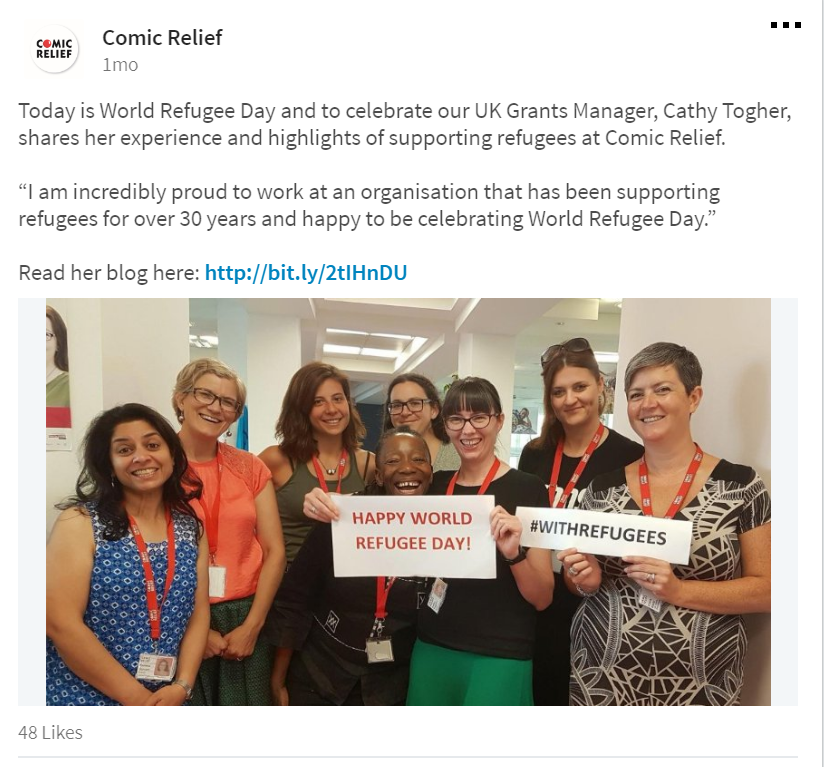Is My Audience Even On Social Media?

In a word: yes. But please keep reading!
With 2.98 billion active social media users, there is no doubt that your audience is definitely using social media. But they might not be on every platform. If you’re short on time and resource, then it’s essential to only put effort into the platforms where you’ll reach the most people. Read on to find out more about each platform and their demographics.
Facebook is no doubt the largest social media platform with 2 billion users, of which 1.2 billion are active each day. There are approximately 42 million U.K Facebook users and around 307 million European users.
Although it’s very likely that your audience – no matter their age – are using Facebook, there is also a pretty neat way to find out for sure.
Introducing Audience Insights
Anyone can access Audience Insights on Facebook – whether you’re a Page Admin or not or even if you’ve never advertised before. Just head here to get started.
It’s worth noting a few things, first:
The default location setting is set to United States, so obviously change this as necessary. Also, although Facebook is open to anyone over the age of 13, in Audience Insights the lowest age you can choose is 18. Also, start with ‘Everyone on Facebook’.
In this example, I’ve selected anyone on Facebook in the United Kingdom aged between 18 and ‘any age’ and all genders. Of course, if your target audience is women aged 25 – 55 then you would select this accordingly. Facebook will then give you a breakdown of demographics for this audience.
On the Demographics tab it also gives you additional information such as Relationship Status and Education Level, however note that certain features (such as Lifestyle) are only available for US audiences.
Click on the Page Likes tab to see information about the top Pages liked by this audience in the U.K, which is segmented by sector. Location will show you the top towns, cities, countries and languages. The Activity tab will show you information on the frequency of Facebook activity (such as liking Pages, commenting etc) for this audience. Note that the Household and Purchase tabs are only available for US audiences.
For more information on how to use Facebook’s Audience Insights, visit their website.
Twitter last released official stats back in 2013 but is estimated to have around 317 to 328 million active users. Of these, it’s estimated that around 16 million are in the U.K and 79% are outside of the US.
It’s much smaller than Facebook, however it’s also easier to reach your audience. How? Well, unlike Facebook where you cannot interact with your supporters unless they come to your Page, Twitter allows you to have a conversation with anyone.
You can also reach and find people through hashtags and join in conversations – or start them.
Twitter is also great as a listening tool; helping you to understand what your audience is talking about and what’s important to them.
LinkedIn is the social media platform for professionals and has 21 million U.K users and over 500 million users worldwide. LinkedIn recently lowered its age to register on the platform to 13 years of age. Almost a quarter of their users are aged between 18 and 29, and 61% fall into the 30 to 64 age bracket.
LinkedIn is great for reaching future employees, volunteers and trustees as well as corporates. It’s the perfect platform to showcase the amazing people who work for your cause, to show your culture, the impact that you make and why you would be a good fit with a corporate partner.

So if you were ever in any doubt, hopefully we’ve shown that yes your audience is definitely on social media. Just choose your platform/s wisely. And of course, if you need a social media management platform… well, you know where to go!
Kirsty Marrins
@LondonKirsty
Data sources:
- The Top 20 Valuable Facebook Statistics May 2017, Zephoria
- About us, LinkedIn
- Instagram by the numbers, Omnicore
Latest articles

In a world of growing uncertainty, small and local non-profit organisations often find themselves with competing priorities and struggle to plan how to allocate their available resources. Despite the increasing demand for their vital work, they are not always able to allocate the funds they receive to strategic planning and future growth.

As the world becomes more digitally-focused, it’s essential for nonprofits to have a digital presence. With more and more options for online engagement, we know that this can be challenging for nonprofits to tackle. But, we also know that it is a huge opportunity to increase audience engagement, awareness and fundraising. To help nonprofits navigate this, we’re going to explore the “whys” and “hows” of creating a nonprofit digital strategy. We’re even providing a free digital strategy canvas to help nonprofits improve their online presence in just a few steps.
Related posts

As the world becomes more digitally-focused, it’s essential for nonprofits to have a digital presence. With more and more options for online engagement, we know that this can be challenging for nonprofits to tackle. But, we also know that it is a huge opportunity to increase audience engagement, awareness and fundraising. To help nonprofits navigate this, we’re going to explore the “whys” and “hows” of creating a nonprofit digital strategy. We’re even providing a free digital strategy canvas to help nonprofits improve their online presence in just a few steps.

We’ve been hearing a lot about the metaverse lately and nonprofits that we work with are wondering what the emerging technology means to them. It’s difficult to get your head around something so new and different so we wanted to try to dig into it to understand more.
See who we help
Contact us
Want to learn more?
Email Jonathan and start a conversation





